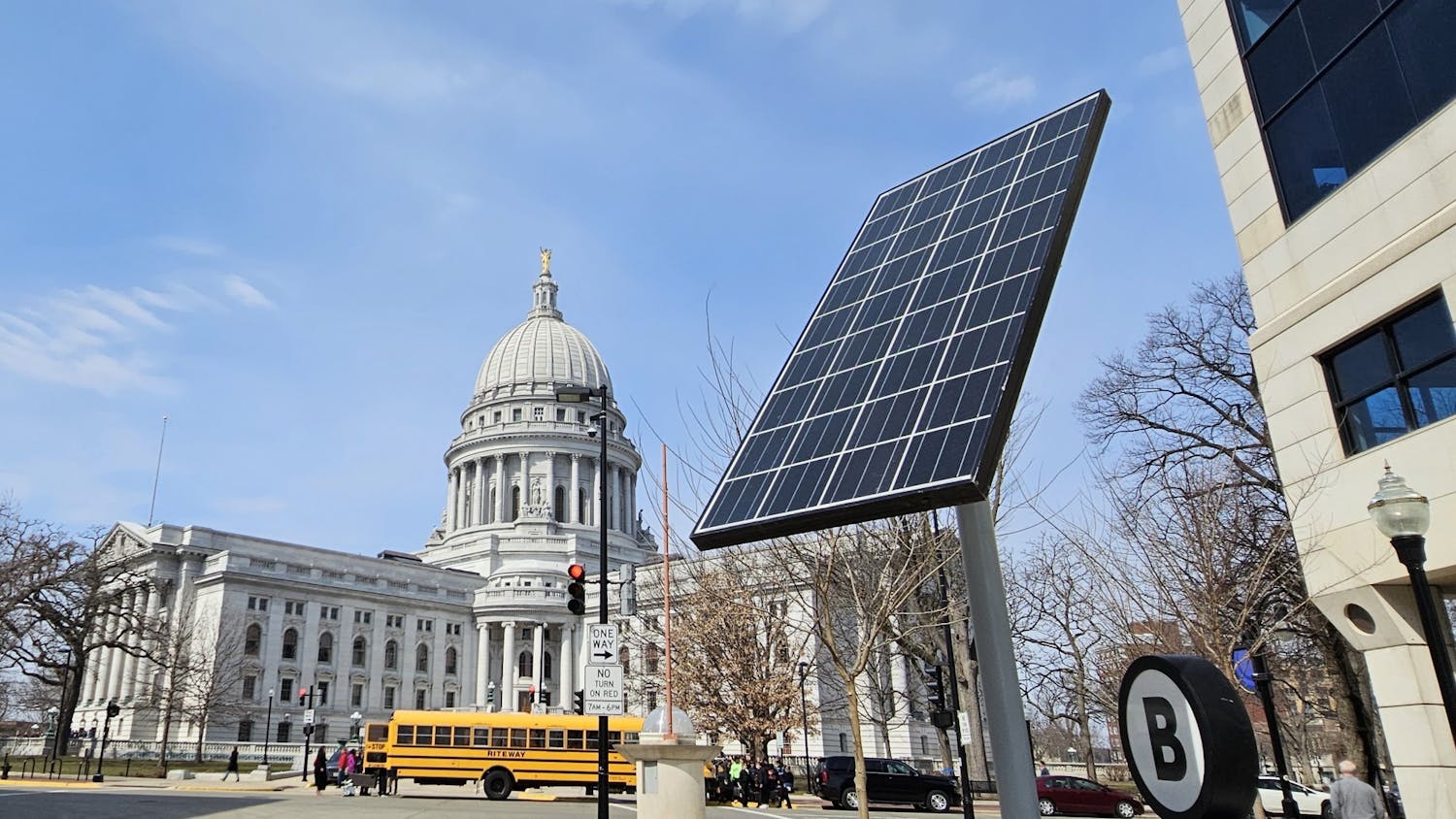A perfect storm of expanding agriculture, invasive species and climate change continues to fuel potentially harmful algae blooms on the four Yahara lakes, raising health concerns for the campus and its surrounding community.
“We're fighting changing climate and we're fighting agricultural intensification, particularly in the dairy industry, and we're fighting urbanization,” said Richard Lathrop, a UW-Madison limnologist. These phenomena have allowed blue-green algae to grow to a massive degree, leading to toxic conditions that shut down Madison’s shorelines.
The expansion of agriculture, most notably in the dairy industry, has fed the increase in the blooms’ sizes and frequency. Lathrop explained that dairy operations today have thousands of cows that create vast amounts of manure. This manure then ends up in the lakes as runoff, carrying nitrogen and, most importantly for algae, phosphorus.
Cyanobacteria, commonly known as blue-green algae because of its coloration, feeds off this phosphorus. The more phosphorus there is available, the more cyanobacteria that can grow.
“We've seen in the last few years some pretty impressive blooms in June,” said Lathrop. Blooms are when cyanobacteria float to the surface and turn the water into a bright-bluish green slurry. These events are known as blooms. Winds can then carry these “scums” to the shore.
“Students that have been here for the last few years will remember some really horrendous scums along the shoreline.” said Lathrop.
These scums and blooms pose more than just an aesthetic issue. Certain types of cyanobacteria can create lesions in the liver and kidneys through chronic exposure, and if ingested can cause seizures and even death. Though not all blooms contain toxins, there is no way to tell without sampling and testing, says Lathrop.
“You have to err on the side of caution. When you see a bloom, you’ve got to really stay away from the water,” Lathrop said.
Invasive species, such as the zebra mussel, have also amplified cyanobacteria growth. The zebra mussel is an infamous freshwater invasive species. According to Lathrop, zebra mussels notably started to appear in the lakes in 2015 — just four years ago — and today the population is very dense, changing the lake ecosystem.
Zebra mussels feed by filtering algae, and one might assume this would help reduce blue-green algae in the lakes. However, because they graze mostly on smaller, harmless forms of algae that do not produce toxins or create blooms, the mussels instead leave cyanobacteria with even more available resources by eliminating the competition.
Climate change further complicates issues by increasing extreme weather events. Increased rain and snowmelt events drain more phosphorus from the soil and farm fields into the lakes.
Adding to this issue is urban development, which both increases hard surfaces that causes more flash flooding, and reduces land available for farmers to dispose of their manure properly.
As Wisconsin summers get hotter, blooming becomes a larger issue. Blooms form over periods of warmer days, especially during summer, when people are most likely to be near the shoreline.
“Dogs are running around the lake edges and lapping up water, and swimmers are always ingesting water. That’s really bad if it’s got toxins in it,” said Lathrop. “So that’s why the beaches are always closed whenever they see signs of blooming algae.”
Lathrop spoke positively of UW-Madison’s response to this growing problem, however, noting the installation of a stormwater treatment structure in Willow Creek, which flows into Lake Mendota West of the Natatorium.
“The campus has, I think, a plan for how to reduce its footprint. I commend the campus for being much more aware of these things and proactive,” he said.
Fred Klancnik, a UW-Madison professor of environmental and civil engineering, explained the extent of UW-Madison’s involvement in the welfare of the lakes. He serves on the board of directors for the Clean Lakes Alliance, which works to raise awareness about the lakes, advocate for their welfare and help raise funds to clean and protect the waterways.
He also mentors students on capstone projects focused on reducing phosphorus levels and protecting the lakes. Klancnik firmly believes in taking care of and developing the lakes to allow more people to enjoy them.
“The more we can provide access to our lakes, the more popular they will become. The investments will create great return,” Klancnik said.






